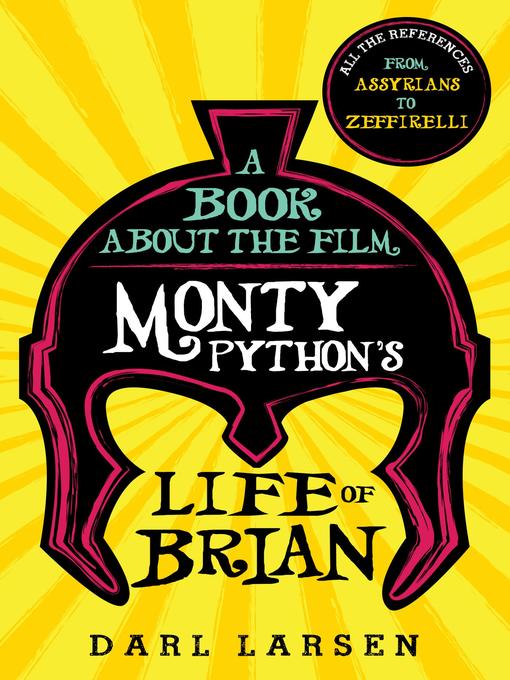
A Book about the Film Monty Python's Life of Brian
All the References from Assyrians to Zeffirelli
کتاب های مرتبط
- اطلاعات
- نقد و بررسی
- دیدگاه کاربران
نقد و بررسی

April 1, 2018
Larsen (media arts, Brigham Young Univ.) explicates allusions to the 1979 film Monty Python's Life of Brian with the same exhaustive, erudite attention and unstuffy style as in his similar A Book About the Film Monty Python and the Holy Grail. Proceeding sequentially through the film's 31 scenes, and bolstered by copious endnotes and a lengthy bibliography, the author's detailed analysis unearths abundant connections to literature, art, history, religion, economics, sociology, sports, politics, and entertainment and pop culture. Wry comments keep the scholarly text from becoming dry. Some background elements of Life of Brian are dated (needing explanation now, 40 years on), others timeless (but also usefully elucidated). Larsen examines script directions and mise-en-scène but focuses mostly on references in the dialog. In the introduction he discusses the comedy troupe's influences and draws parallels between late-1970s Britain and the Pythons' version of the holy land some 2,000 years before: religious and political zealotry, terrorism, protest, and cultural change. The introduction also notes the film's relative lack of historicity (compared to The Holy Grail), emphasizing its reflection of contemporary events and culture. Setting this film in the context of the Pythons' oeuvre, Larsen frequently cites his own previous work, not surprising as he is arguably the Pythons' reigning scholar. VERDICT The organization (by scene rather than by theme) can make it challenging to mine the gems here, but film students, social and cultural historians, and, naturally, fans, will find riches to pore over.--Patricia D. Lothrop, formerly of St. George's Sch., Newport, RI
Copyright 2018 Library Journal, LLC Used with permission.

January 1, 2018
Larsen ain't kidding about his subtitle. Like his similar book about Monty Python and the Holy Grail, this one provides a microscopically close reading of Monty Python's Life of Brian, about a fellow named Brian whose life parallels, in a satirical way, the life of Christ. The author teases out every last shred of meaning, every oblique reference, every nudge-nudge-wink-wink in-joke, every bit of political and religious commentary, allowing us to see the film in a new and frequently surprising light. For example, John Cleese's line, It is the Meek who are the problem, isn't just a reference to the many people who refused to accept Jesus' message; it's also a reference to a specific agent of political change in Britain after WWII. Larsen's scholarship is just remarkable, and his affection for Python is abundant on every page. For those who believe Monty Python is too often written off as merely a comedy troupe, this book is a reminder of just how erudite and talented the members of Python are. A must-read for fans.(Reprinted with permission of Booklist, copyright 2018, American Library Association.)

May 11, 2020
Larsen (Monty Python’s Flying Circus), a film and animation professor at Brigham Young University, presents an exhaustive, and sometimes exhausting look at Monty Python’s last film, 1983’s The Meaning of Life. Larsen posits that the film is a pessimistic look at life during the time of Prime Minister Margaret Thatcher. For example, the film’s opening featurette of elderly office accountants rebelling against their corporate masters is a deep critique of America’s “financial dominance” of London, which created the conditions for Thatcher’s “strict sado-monetarist policies had proven so effective at reducing inflation, but also reducing employment.” No line in the film is without comment (some lines get a tedious multiparagraph examination). A brutal look at hospital childbirth in “Every Sperm Is Sacred” is shown to be a part of England’s 1980s debate “about skyrocketing health care costs and the seeming inability to control its spending or quality of care.” And the film’s final sketch, a parody of Ingmar Bergman’s The Seventh Seal, hammers on upper-middle-class Thatcherites diminishing the specter of Death by trying to treat him “as an adorable local.” Hard-core Monty Python fans will be thoroughly delighted, but those with a more casual interest would do fine sticking with the film.

























دیدگاه کاربران